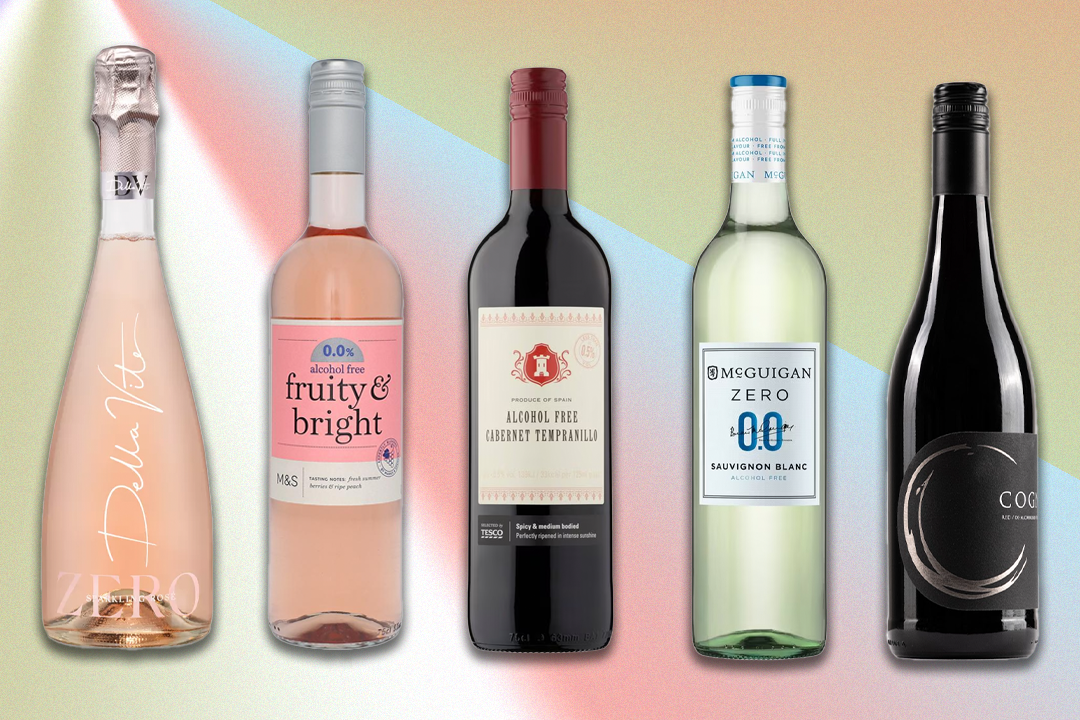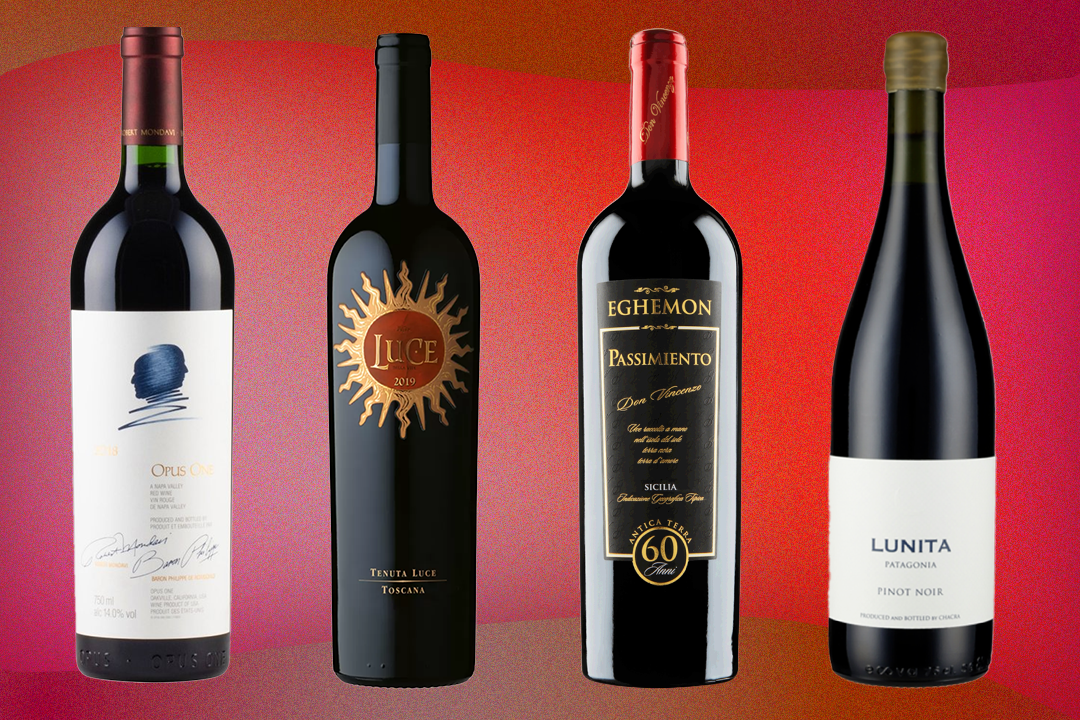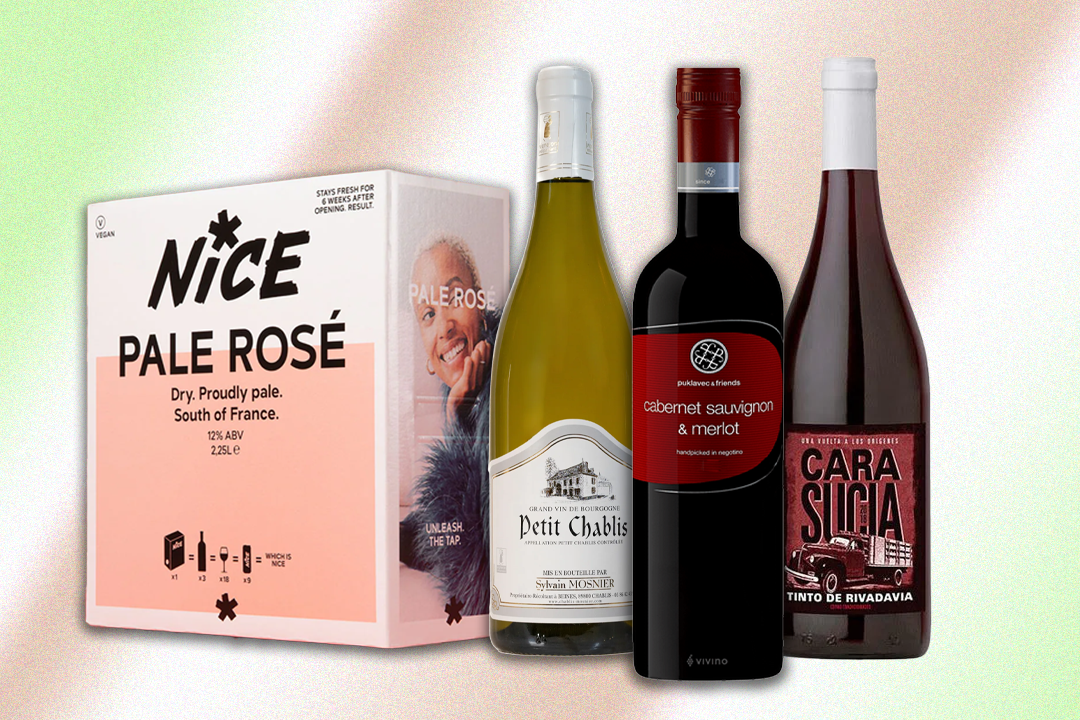
The Independent's journalism is supported by our readers. When you purchase through links on our site, we may earn commission. Why trust us?
12 best sherries that aren’t just for Christmas, tried and taste tested
The Spanish fortified wine makes for a first-class aperitif

If you think sherry is just for Christmas – something to sip while unwrapping another pair of gardening gloves from your aunt – it’s time to think again. This fortified wine not only offers a wide and exciting range of tastes and flavours, it’s also one of the least costly ways to experience centuries of traditional winemaking – history in a glass, if you like.
A product of southwest Spain, sherry hails from a specific region between the towns of Jerez and Sanlúcar de Barrameda. Most of the sherries are produced using the indigenous white palomino fino grape, while the luscious pedro ximénez grape forms the basis of the sweetest sherries.
Sherry is aged using the solera system, which sees casks or butts of sherry stacked together and continuously added to with younger sherries, to create a blend from different years.
Fino is the classic sherry. Dry and the colour of pale straw, it matures under a layer of surface yeast called ‘flor’. Without doubt, it’s the perfect aperitif – delicate but full of flavour. Manzanilla is similar but can only come from Sanlúcar de Barrameda, where it matures, with an accentuated saline tang, under a thick layer of flor. In recent years, fino and manzanilla sherries can also be enjoyed en rama (raw), which means the sherry is very lightly filtered and tastes as it would if it was drawn straight from the cask.
Amontillado, meanwhile, is a sherry that ages under flor before being exposed to the air, resulting in a darker colour and nuttier taste. Then there’s palo cortado, which starts life as a fino but then, for reasons still unclear, it loses its flor and turns into a more rounded and mature sherry.
Sherries that are found to have more body than others and show signs of being more robust are aged for a longer period without flor, creating oloroso – a darker hued sherry with a rich and expressive flavour.
Now you’re up to speed, read on for our full review of the best sherries on the market.
How we tested
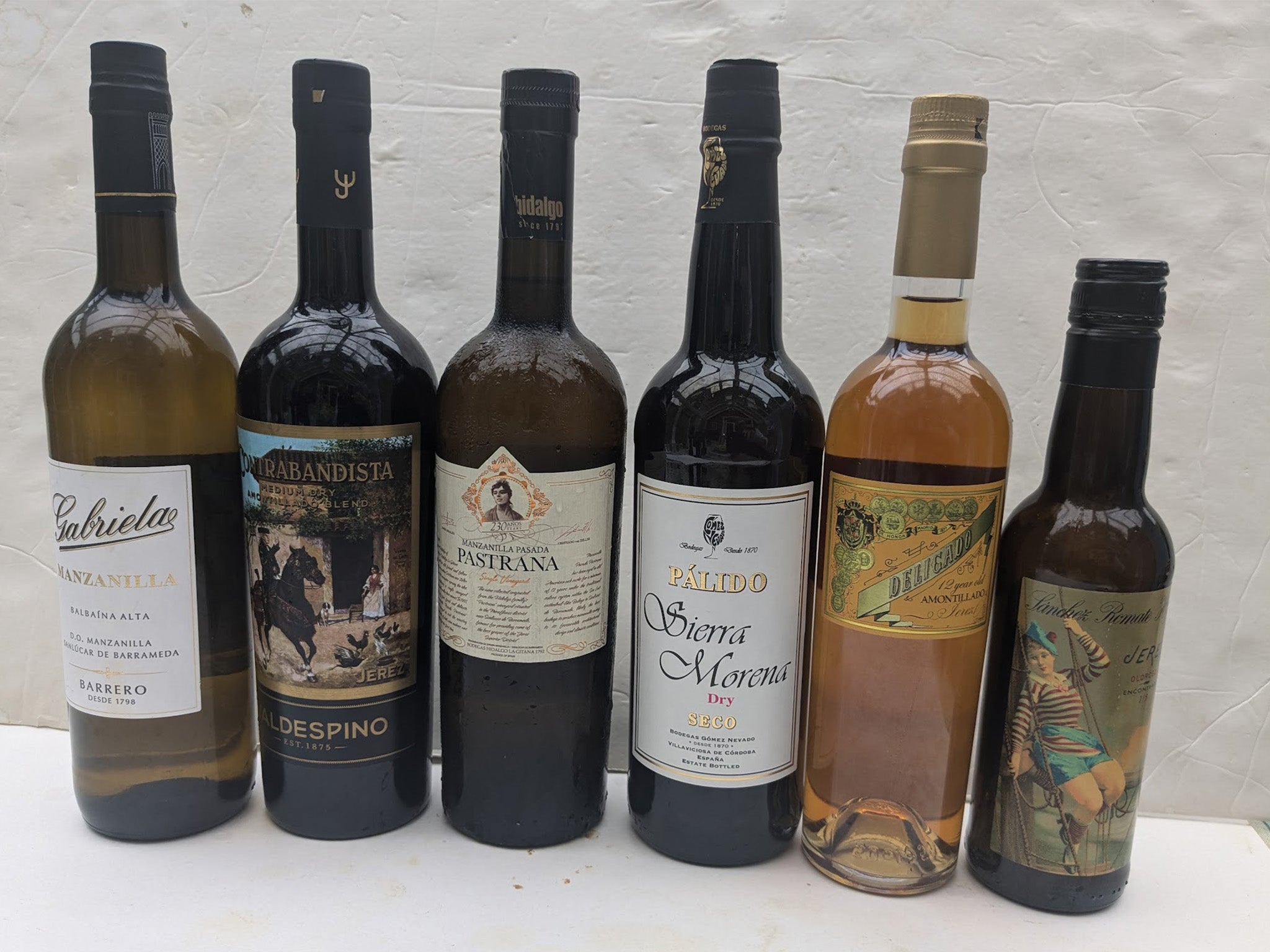
Many of the dry sherries were tasted in the role that they fill with style and ease – a first-class aperitif. Others were enjoyed with light meals or tapas-like snacks. For each, we considered the flavour profile as well as value for money. Keep scrolling to find out which tipples took our fancy.
The best sherries for 2024 are:
- Best overall – Sánchez Romate dry oloroso encontrado: £16.99, Waitrosecellar.com
- Best budget buy – Morrisons fino sherry: £8.50, Morrisons.com
- Best for pairing with food – Fino Vina Corrales Pago Balbaina NV (ex-cellar 2022): £34.25, Corneyandbarrow.com
- Best aperitif – Delicado 12-year-old amontillado sherry NV: £16.99, Laithwaites.co.uk
- Best medium dry sherry – Valdespino Contrabandista amontillado: £23.95, Leaandsandeman.co.uk
Sánchez Romate dry oloroso encontrado

- Best: Overall
- ABV: 20%
- Size: 37.5cl
- Why we love it
- Pairs well with meat dishes
- Stylish period label
This is a sherry with a secret hidden in its name. Encontrado means ‘found’ and this mahogany-hued oloroso comes from five 600l casks or butts only recently discovered in Sánchez Romate’s 235-year-old cellar in Jerez. Aged but elegant, it’s full of caramel-laden, slightly toasted notes with hints of herbs and salt and a lengthy and pleasing finish. It would complement a rich, meaty casserole or be perfect paired with a full and creamy cheese. The period label is a bonus, too.
Morrisons fino sherry
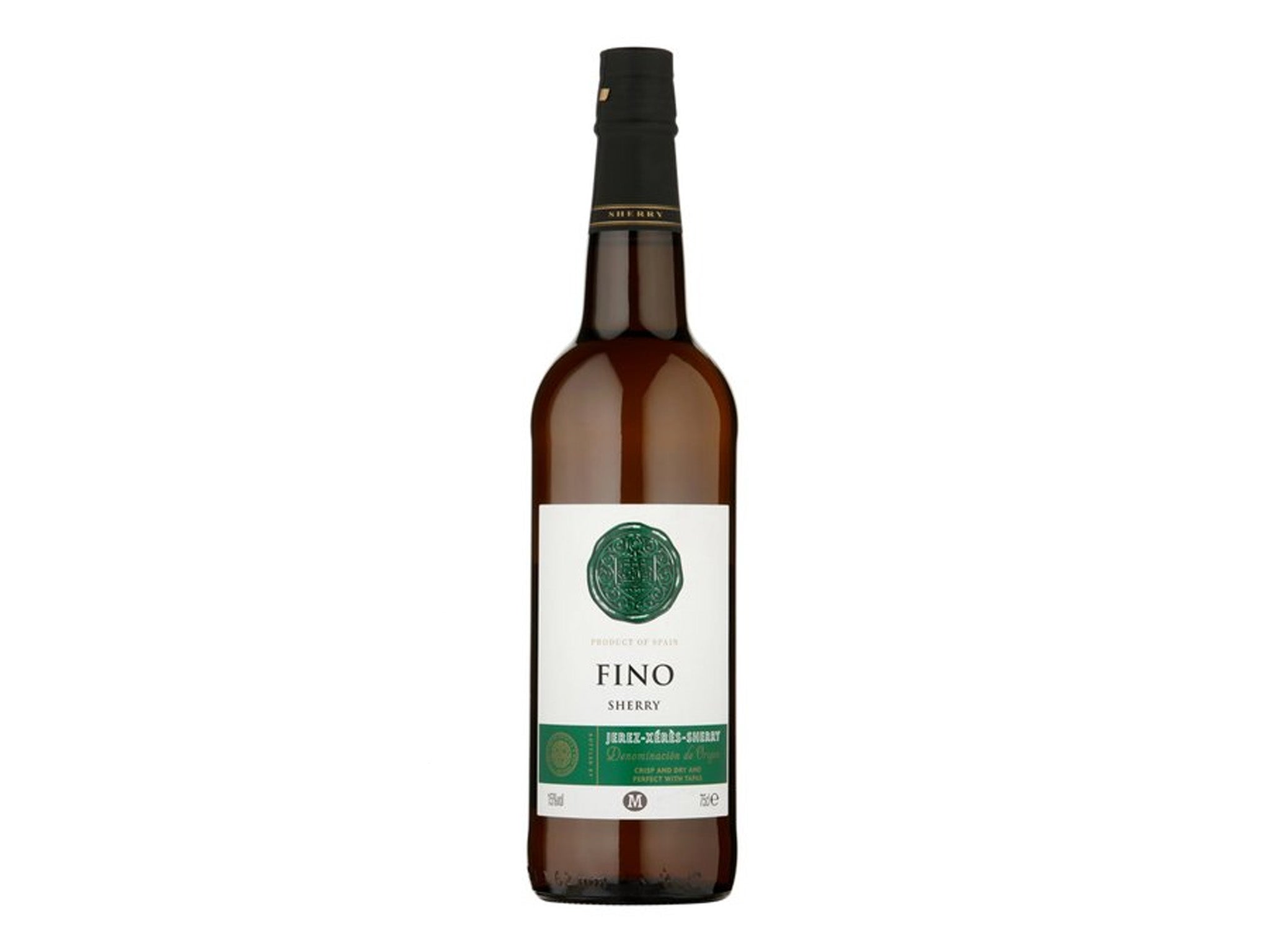
- Best: Budget buy
- ABV: 15%
- Size: 75cl
- Why we love it
- Pairs well with tapas dishes
- Former silver medal winner
Produced in partnership with sherry master José Estévez, this is a fino sherry that’s everything you expect it to be – dry and crisp with bite-into-an-apple flavour and a nutty opulence. A former silver medal winner in the International Wine Challenge, it’s a perfect fit for a variety of tapas dishes – from patatas bravas to calamares fritos – or it can be enjoyed as a simple but welcome aperitif. Perhaps the best thing about it, though, is the price. All that history, heritage and taste for less than £10. That has to be a bargain, in anyone’s book.
Vina Corrales Pago Balbaina fino NV (ex-cellar 2022)
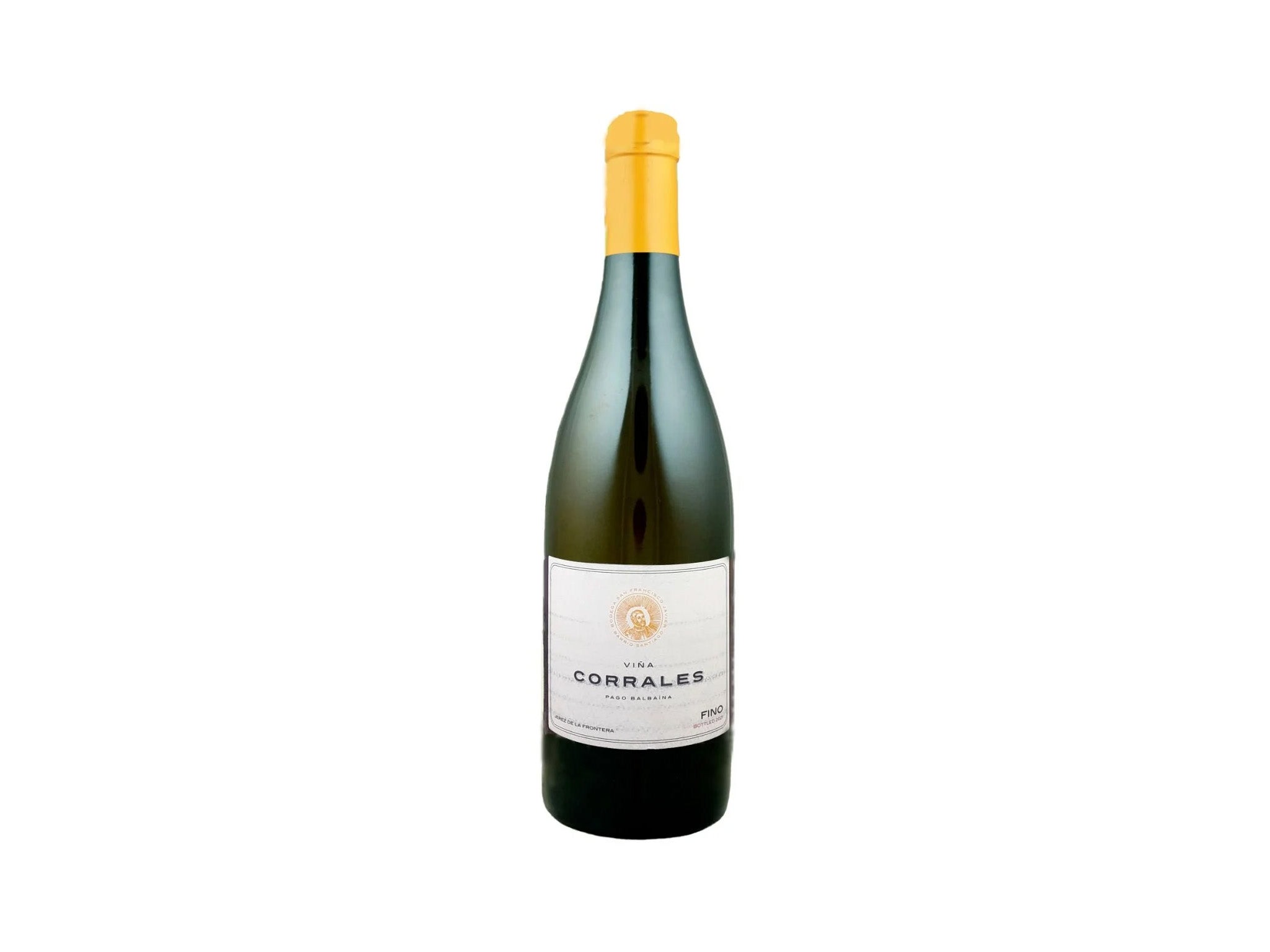
- Best: For pairing with food
- ABV: 15%
- Size: 75cl
- Why we love it
- Dry and elegant
- Pairs well with almost anything
Welcome to the sherry that doesn’t look like a sherry at all but more like a fine bottle of white wine. Which is what Danish winemaker Peter Sisseck, who firmly believes fino sherry is Spain’s greatest white wine, wants you to think. Hence the burgundy-shaped bottle and no mention of sherry on the purposely minimal label. Open a bottle and you’ll find a beautifully dry and elegant sherry from the coastal Balbaína estate that abounds with crisp apple notes along with a nutty palate and hints of salt and herbs. An excellent aperitif but, much more than that, it’s a wine that can match almost anything on the dinner table, from chicken fricassée to cod meunière.
Delicado 12-year-old amontillado sherry NV
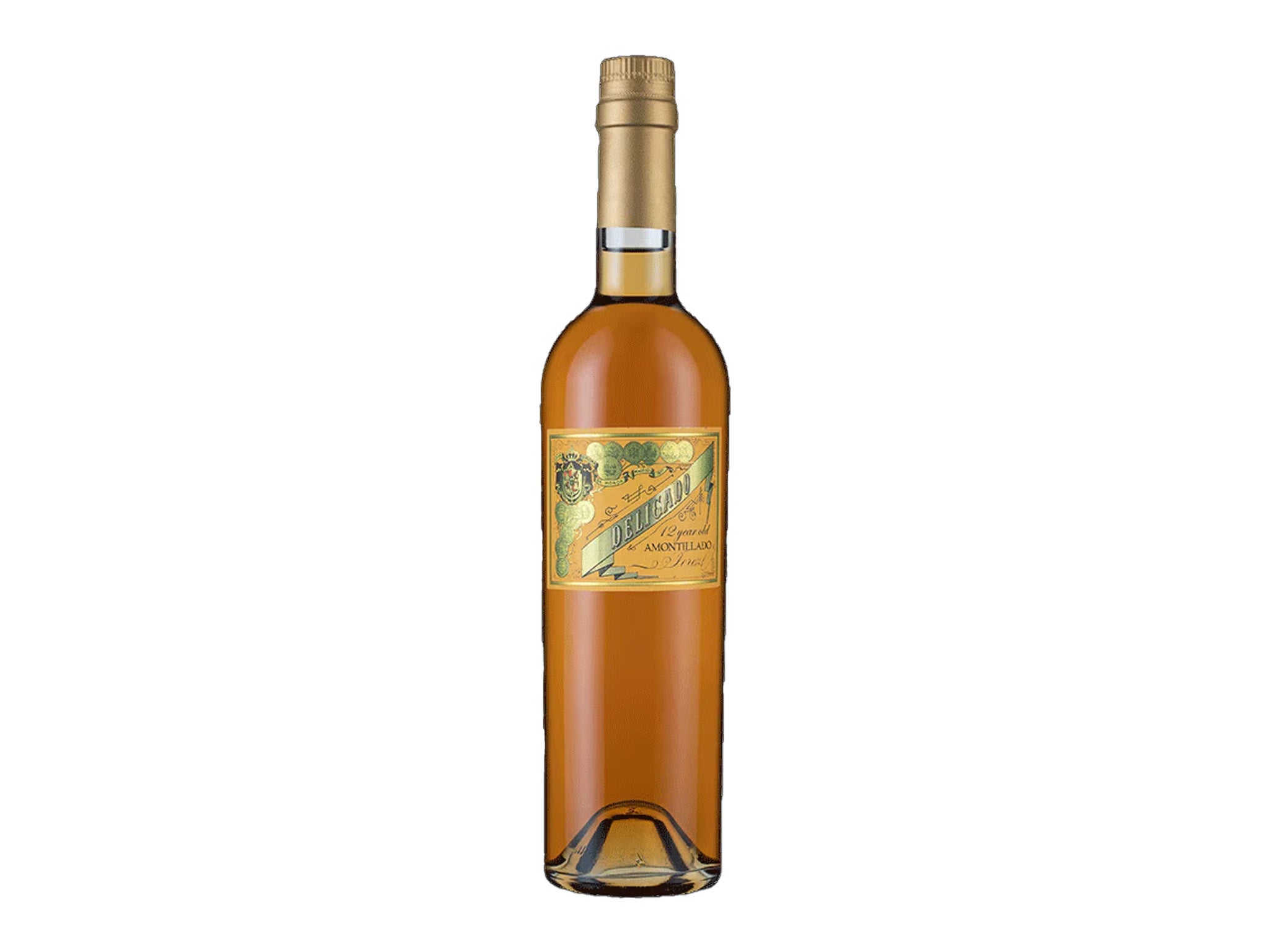
- Best: Best aperitif
- ABV: 17%
- Size: 50cl
- Why we love it
- Fresh and light
- Pairs well with mature cheese
A single sniff should convince you. This is one of those sherries, with its rich mahogany hue and intense hazelnut and caramel aromas that smells and looks as good as it tastes. Made from the traditional palomino grapes then aged for 12 years in the solera system, it has all the concentrated and complex notes you’d expect from a first-class sherry, without losing its freshness and lightness. A product of the famed Gonzáles Byass bodega, it’s proof life’s luxuries can come in small packages. Enjoy it simply as an aperitif with salted almonds or as a more than suitable partner for some of Spain’s famous mature cheeses.
Tio Pepe fino saca 2024 release en rama Gonzalez Byass
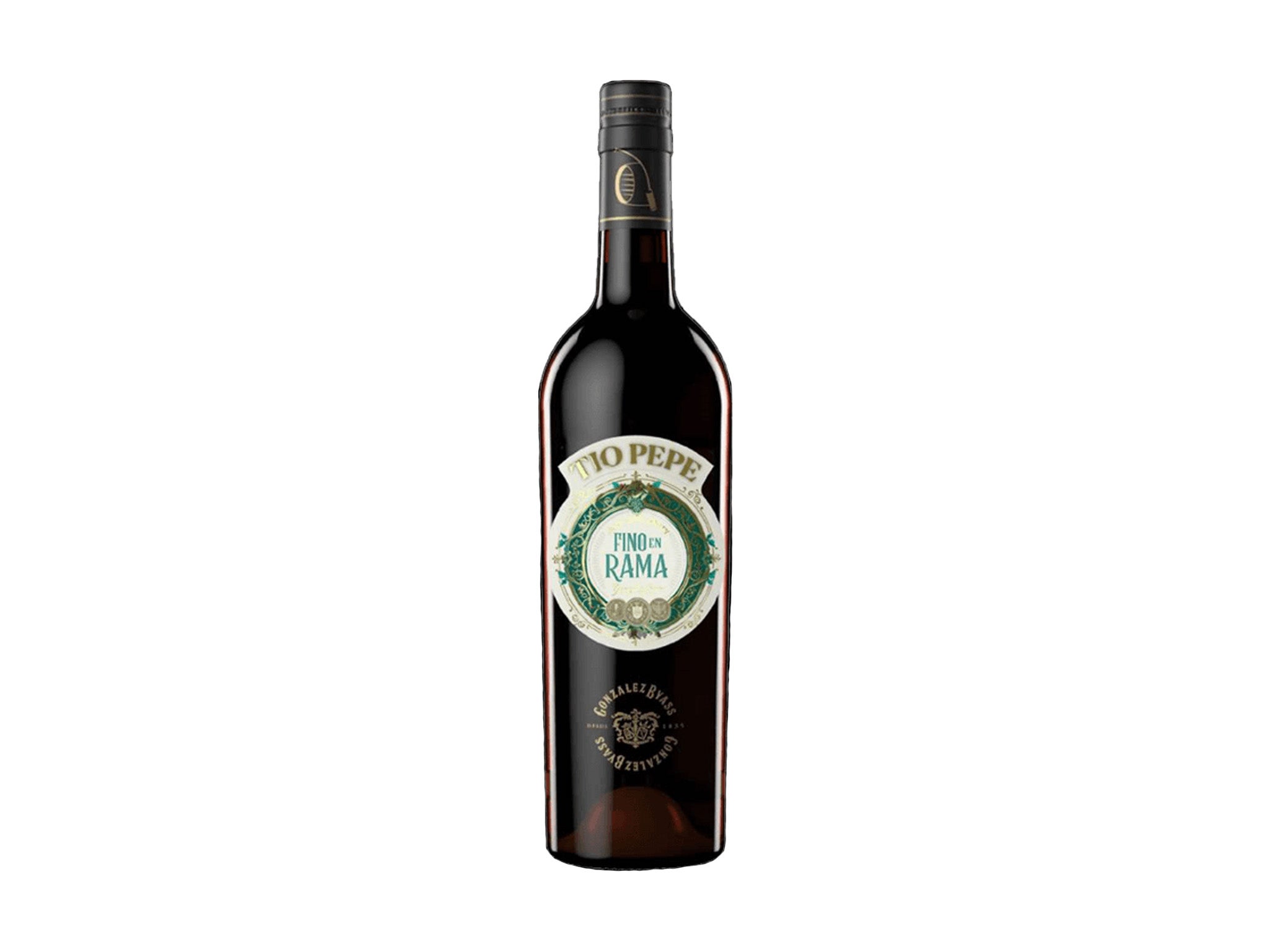
- Best: Best en rama sherry
- ABV: 15%
- Size: 75cl
- Why we love it
- Bottled direct from the barrel
Now with a much-anticipated yearly release, this is a fino sherry from one of the world’s great sherry houses that almost shouts its quality from the rooftops. Bottled direct from the barrel with no fining or filtration in the spring, when the flor yeast it at its thickest, the 15th iteration highlights the intense and enticing orchard aromas of green apples and cut grass with notes of almonds and fresh pastries. Not one to be kept long, you can enjoy this chilled with salted almonds or Spanish cheese.
Barbadillo Criadera selection amontillado en rama
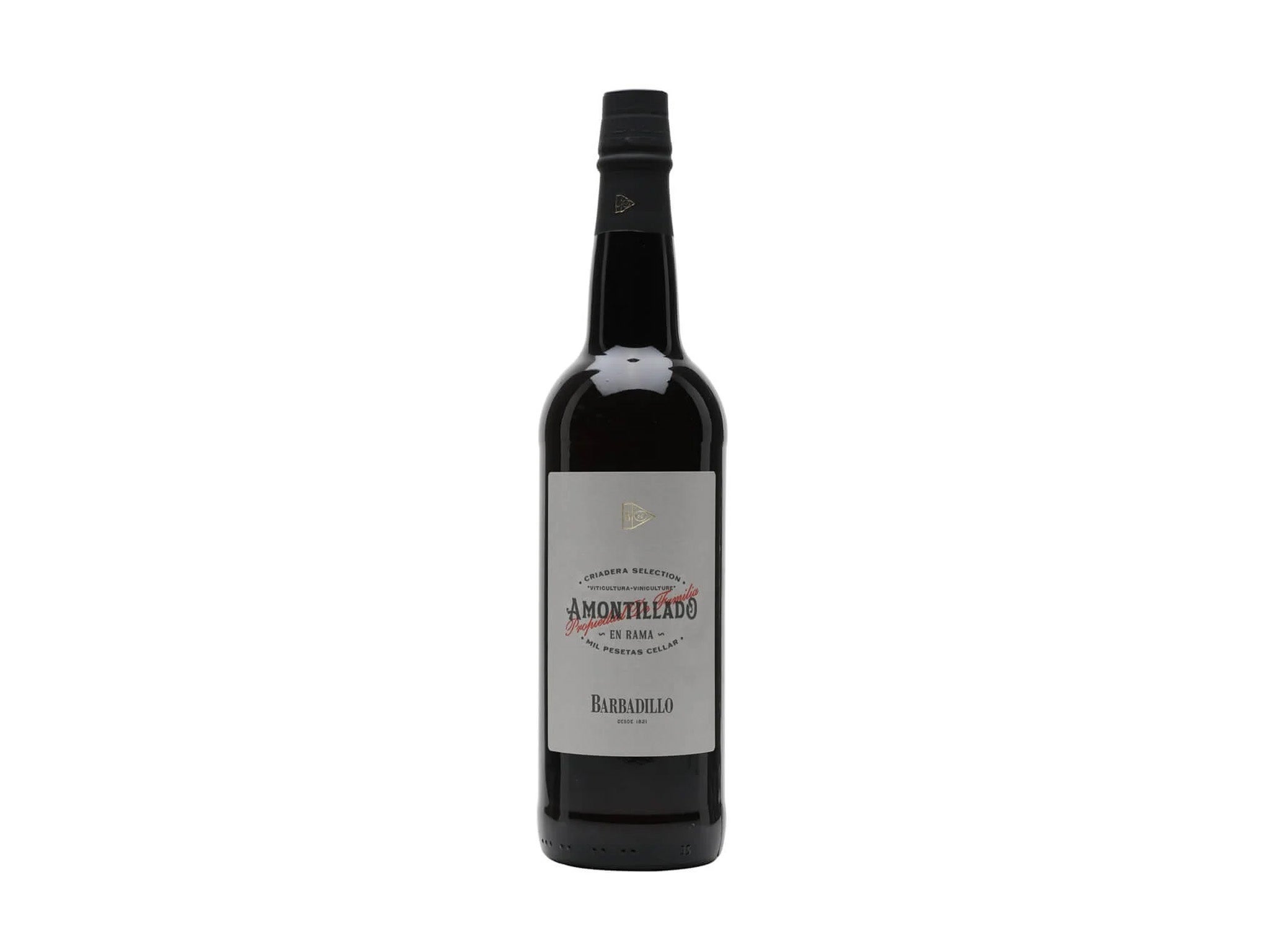
- Best: For pairing with tapas
- ABV: 19%
- Size: 75cl
- Why we love it
- Perfect as an apertif
The Barbadillo company dates back to 1821 and this winery is one of the oldest family businesses in Spain. This full-bodied amontillado is ‘en rama’, coming straight from the cask, unfined and with minimal filtration. So, there’s nothing between you and the authentic taste of a genuine amontillado. Robust but complex brazil nut and dried fruit flavours are accompanied by intense and impressive citrus notes. Perfect as an aperitif, it is also the ideal partner for a variety of tapas dishes.
Hidalgo Pastrana pasada manzanilla sherry

- Best: Manzanilla
- ABV: 15%
- Size: 75cl
- Why we love it
- Light and fragrant
Manzanillas are sherries produced solely in the port of Sanlúcar de Barrameda, near the estuary of the Guadalquivir river, where the microclimate helps to produce a wine that’s as light, fragrant and as distinguished as fino. The pasada style takes the manzanilla production a step further, with the wine being aged for longer, which leads to the flor weakening slightly, thus allowing a small amount of oxidation while it matures in American oak casks. The final result is a stunning, ultra-flavoursome yet elegant wine with potent notes of apple, citrus peel and salted almonds.
Valdespino Contrabandista amontillado

- Best: Medium dry sherry
- ABV: 18%
- Size: 75cl
- Why we love it
- Oozes quality
With a name and label as colourful as any spaghetti western, you’d expect something special, and you won’t be disappointed. This sherry is aged for eight years under a natural layer of flor, and is then aged for a further eight years under the solera system. Finally, a proportion of the sweet pedro ximénez sherry is blended in before bottling. The end product is a rich, medium-dry amontillado that oozes quality, with intense notes of caramel, roasted hazelnuts and raisins, and a long finish. The label is based on the painting Venta del Gato (The Cat’s Inn), depicting a 19th-century contrabandista (smuggler).
Gomez Nevado Pálido seco sierra morena

- Best: Sherry that’s not quite a sherry
- ABV: 15%
- Size: 75cl
- Why we love it
- Pale and dry
When is a sherry not a sherry? When it’s a fino-style wine produced using the sherry method outside the designated Denominación de Origen of Jerez area. From a vineyard near Cordoba in southern Spain (one of the first in Spain to be certified organic, in fact), this pálido (pale) and dry sherry-like wine is not fortified but has a natural alcohol level of 15 per cent and is aged under flor using the traditional solera system. Bottled straight from the cask, it’s crisp and nutty with hints of yeast and hay and a notable salinity. Enjoy it with traditional tapas, such as calamari, stuffed peppers or serrano ham.
Gonzalez Byass Leonor palo cortado 12-year-old sherry NV

- Best: Palo cortado
- ABV: 20%
- Size: 75cl
- Why we love it
- Beautifully balanced
- Pairs well with red meat
Palo cortado is the least well known and, in some ways, the most mysterious of all the different styles of sherry. Perhaps that’s because it originally arrived on the scene by accident. It was a sherry that had gone wrong, a wine where the flor had suddenly and inexplicably disappeared. What was left was a sherry that was an intriguing cross between an oloroso and an amontillado. This example, produced from amontillado, has an arresting nuttiness tempered with citrus notes and hints of spice and vanilla. Beautifully balanced, it’s the perfect accompaniment to a red meat dish or a classic aperitif.
Gabriela manzanilla
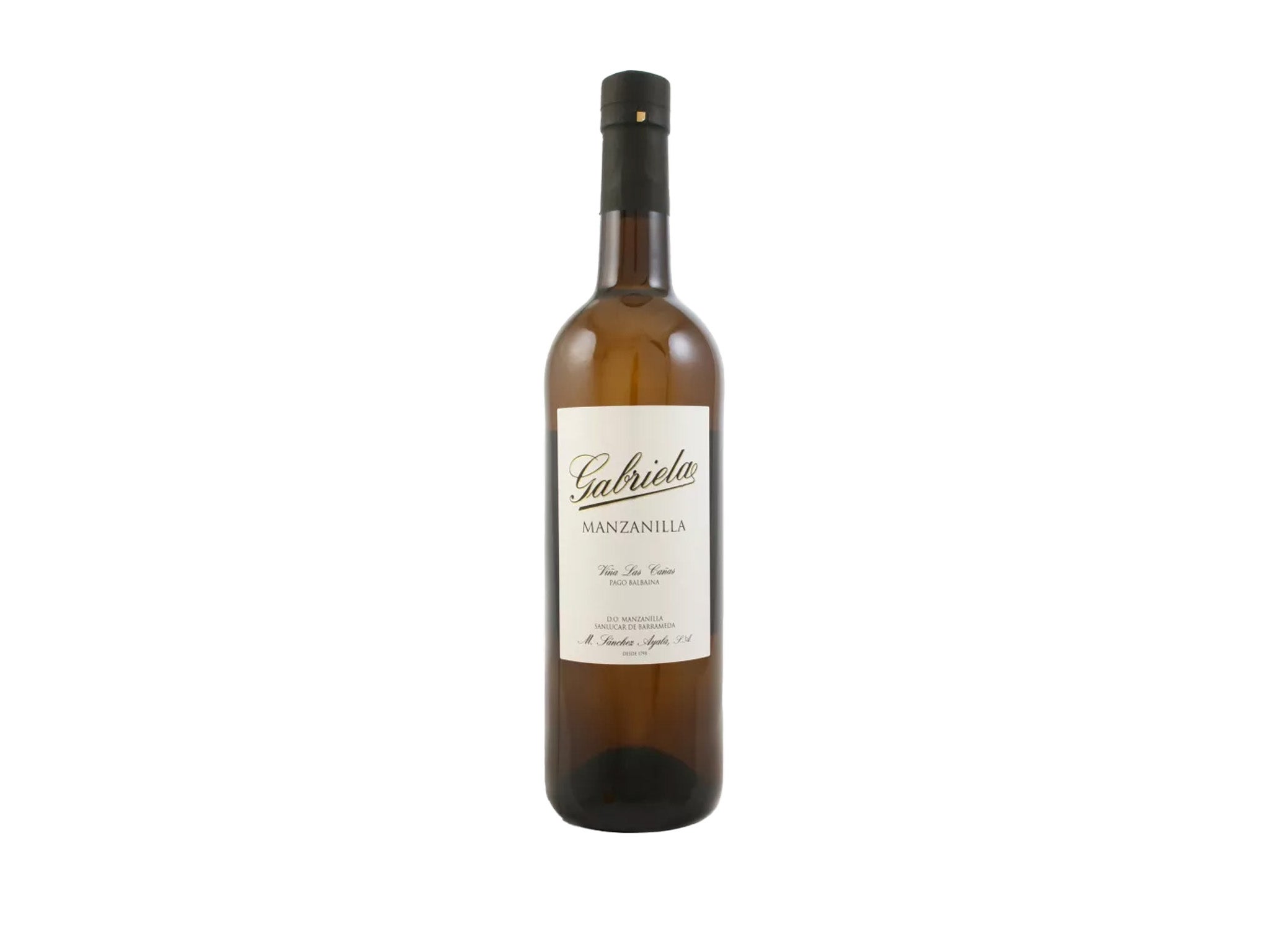
- Best: For pairing with seafood dishes
- ABV: 15%
- Size: 75cl
- Why we love it
- Sophisticated taste
Hailing from Sanlúcar de Barrameda, this is an outstanding manzanilla – the name derives from the Spanish for chamomile tea, which is said to share the same bouquet. The grapes come from vineyards in the Balbaína Alta area, where the sea, high humidity and keen westerly winds, result in a sophisticated and very drinkable sherry that offers orchard and nut notes, along with a nautical tinge. Enjoy it by itself or with seafood.
Adnams x Sopla Poniente cosechero PX

- Best: Sweet treat
- ABV: 15%
- Size: 50cl
- Why we love it
- Sweet
- Pairs well with chocolate desserts
PX (pedro ximeniz) grapes are the sweetest used in sherry making. Sun-dried to ensure maximum sweetness, they produce an almost treacle-like, dark dessert sherry that’s imbued with huge raisin, dried fruit and caramel flavours. For this wine, the winemaker Pepe Rodriguez de Vera has sourced it from barrels in the neighbouring Montilla-Moriles region of Andalusia, which means it can’t technically be called a sherry, as it’s outside the designated sherry area, even though it’s made in exactly the same way. None of that takes away from the enjoyment and satisfaction this wonderfully sweet wine offers. Serve it chilled with a rich chocolate dessert.
The verdict: Sherries
We’re lucky to have such a wide and varied range of sherry available to us in the UK. Whether it’s a bone-dry fino or a sweet PX, there is a sherry to suit every taste and every palate. With prices starting at less than £10 (hello, Morrisons fino sherry), it’s also a reasonably inexpensive way to taste wines of real quality and finesse. Our best buy, however, is the recently discovered Sánchez Romate dry oloroso encontrado, which is a hugely impressive and elegant wine that, with its nutty and caramel notes and long and satisfying finish, is a sherry that just keeps on giving.
Fancy a different tipple? We’ve rounded up the best Scottish single malt whiskies
Voucher Codes







